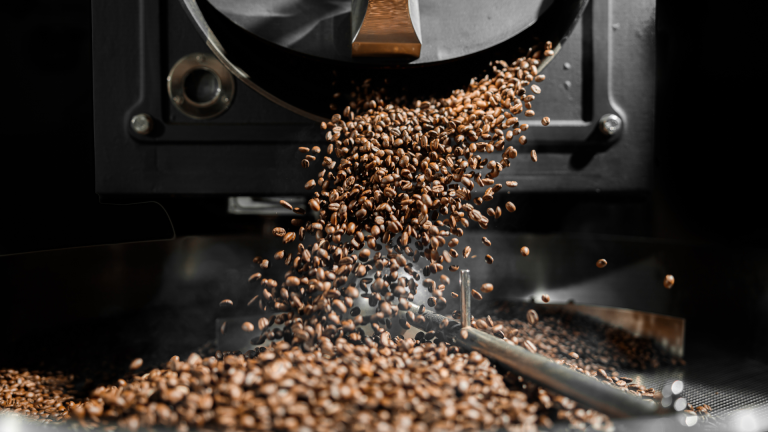
Have you ever pondered over the universal indicator of coffee? If so, you’ve landed in the perfect spot! This blog delves into a topic that’s not just intriguing but also crucial for every coffee lover and enthusiast.
In the simplest terms, a universal indicator is like a detective’s tool, helping us figure out how acidic or basic a substance is. You see, coffee isn’t just coffee; its acidity plays a huge role in how it tastes, how good it is, and even how we brew it. Most black coffees tend to hover around a pH of 5, which is on the acidic side. In this blog, the relationship between universal indicators, coffee’s acidity, and how it all comes together to give us that perfect coffee experience will be explored.
Our aim here is not just to explore the relationship between universal indicators, coffee acidity, and the overall coffee experience but also to equip you with practical knowledge. Understanding a coffee’s pH level and its impact on taste, quality, and brewing process can significantly enhance your coffee journey.
Understanding pH and Acidity
Let’s talk about pH and acidity; what do these terms really mean, especially when it comes to our beloved coffee? Think of pH as a way to measure just how many hydrogen ions are hanging out in a liquid. The more hydrogen ions, the more acidic it is.
The pH scale runs from 0 to 14. Anything below seven is considered acidic, seven is neutral, and anything above 7 is essential. So, if you’re testing something with a universal indicator and it turns red, you know you’re dealing with a strong acid.
Now, here’s where it gets interesting when we talk about coffee: acidity isn’t just about that number on the pH scale; it’s also a flavor sensation. When coffee professionals discuss acidity, they’re often talking about that pleasant “snap” or crispness you notice. It might come off as sweet, crisp, or even a bit tart, like a dry wine. Words such as dry, sharp, vibrant, lively, moderate, or dull are used to describe a coffee’s acidity. It’s a key part of what makes a coffee taste interesting and complex. Some describe acidity as having subtle fruity qualities like citrus, lemon, or berry-like notes.
So, while the pH level tells you about the chemical properties, the acidity we taste is a whole different story. The goal of this blog is crystal clear: to explore how universal indicators, coffee acidity, and the overall coffee experience are related. The pH level of coffee indicates its acidity or basicity, which has a direct impact on the taste, quality, and brewing process. When thinking about what the universal indicator of coffee is, it’s essential to keep both of these ideas in mind.
What is a Universal Indicator?
A universal indicator is a valuable tool for quickly assessing a solution’s acidity or basicity. Unlike specific indicators that only work within a narrow pH range, a universal indicator is a mixture of several indicators that display a spectrum of colors across the entire pH scale. This allows you to determine not just if a solution is acidic or basic but also how much.
The universal indicator functions by changing color depending on the pH value of a watery solution. This color change occurs because the indicator contains halochromic compounds that exchange electrons with hydrogen ions (H+) or hydronium ions (H3O+). As these electrons move, they absorb and reflect different colors of light, resulting in a visible color change.
Most universal indicators are variations of a formula patented by Yamada in 1933. This formula consists of a mixture of 1-propanol, water, and several indicator compounds: phenolphthalein, methyl red, bromothymol blue, sodium bisulfite, thymol blue, and sodium hydroxide.
Universal indicators should be handled with care. They should be used at room temperature, avoiding boiling or chilled solutions. They are also harmful if they come into contact with skin and poisonous if ingested or inhaled.
Universal indicators display a range of colors depending on the pH level:
- In strong acids (pH 0-3), it appears red.
- In weak acids (pH 3-6), it appears orange to yellow.
- In neutral solutions (pH 7), it appears green.
- In weak bases (pH 8-11), it appears blue.
- In strong bases (pH 11+), it seems indigo to violet to fuchsia.
When universal indicator is mixed with coffee, it typically turns reddish-brown or yellowish-brown, reflecting coffee’s acidic nature. However, if the coffee has gone bad, it may produce a sour or rancid smell.
.
How to Test Coffee with a Universal Indicator?
To effectively test coffee using a universal indicator, you can choose between two forms of the indicator: paper strips and liquid solution. Each has its advantages, depending on the coffee sample you’re working with.
Paper Strips: These are convenient and easy to use, especially if your coffee sample is dark in color or thick. To use, simply lay the pH paper on the surface of the coffee solution. The paper will change color based on the coffee’s pH level without disturbing the sample itself. Keep in mind that determining the precise pH value can be difficult using paper strips.
Liquid Solution: If you have a colorless coffee solution and don’t mind altering the sample, using a universal indicator solution is a great option. Add about 3-4 drops of the indicator to 5 ml of the coffee sample to determine its pH value as accurately as possible. This method, however, is not suitable for solutions that already have color.
Another method involves using MQuant® test strips with the MQuant® StripScan App. This approach combines a test strip with a smartphone app to analyze the pH value of coffee.
Here’s the procedure:
- Start the App.
- Dip the MQuant® test strip into the undiluted coffee sample (between 15–25 °C) for about 2 seconds, making sure the reaction zone is completely immersed.
- Remove any extra liquid from the strip by shaking it off and drying the back with a paper towel.
- In the app, select the parameter pH (1.09535) and wait 15 seconds for the color of the pH strip to fully develop. A countdown will appear on the screen.
- Just before the countdown ends, place the test strip on the MQuant® Card.
- After the waiting time, use your smartphone to capture a picture of the test strip and MQuant® Card within the app’s viewfinder.
- The app will automatically capture the picture and display the results on your screen.
Remember, regardless of the method you choose, ensure that the coffee is undiluted for accurate analysis.
Factors Affecting Coffee Acidity and pH
Several factors influence the acidity and pH of coffee, impacting its taste and overall quality. These factors range from the roast level of the beans to the brewing method used.
Roast Level: Coffee’s acidity decreases as the roast becomes darker. Light or medium roasts generally have a higher acidity than dark or espresso roasts.
Bean Type: The type of coffee bean significantly affects acidity. Arabica beans are more acidic than Robusta beans. Verena Street Coffee only uses 100% Arabica beans in all of its blends. Arabica beans grown at higher altitudes mature more slowly, allowing for better flavor development and higher acidity.
Grind Size: The size of the coffee grind also plays a role. Coarser ground coffee tends to have less acid than a fine grind. The size of the grind is usually determined according to the type of coffee maker and how quickly water needs to flow through the coffee.
Brewing Method: Different brewing methods extract varying amounts of acid from coffee beans. Cold brewing, which involves steeping ground beans in cold water for an extended period, reduces acidity compared to hot brewing methods. Cold water extracts less of the coffee’s natural acids, resulting in coffee that is about 70% less acidic than hot-brewed coffee.
Water Quality: The pH of the water used for brewing can influence the final acidity of the coffee. Although not explicitly stated, it can be inferred that water with a pH closer to neutral (pH 7) is ideal, as very acidic or alkaline water may negatively affect the coffee’s flavor.
Freshness: Freshness is a key factor dictating coffee quality. Fresh coffee beans produce the most flavor and aroma when brewed. Whole beans are typically at their peak aroma and taste for a short period after they are roasted. This period is typically within 2-3 weeks, after which the whole bean, flavor, and aroma start to degrade. As a result, all the beans begin to lose their freshness, and the coffee starts to taste flatter or stale over time.
Altitude: Altitude is also a factor. Arabica coffees grown at higher altitudes tend to have a higher acidity. Arabica coffee grows and matures more slowly, allowing for improved flavor development and higher acidity.
Interpreting the Results of the Universal Indicator Test (200 words)
When using a universal indicator to test coffee, the resulting color offers insights into the coffee’s characteristics. Generally, coffee is acidic, so a universal indicator typically turns a reddish-brown or yellowish-brown color. This aligns with coffee generally landing around a pH of 5 on the pH scale. Keep in mind that a reddish color indicates a strong acid.
However, variations in color can point to different factors:
- Roast Levels: Different roast levels can influence the color. For example, a lighter roast might produce a slightly different shade of yellow, while a darker roast could lean more towards brown.
- Brewing Issues or Staling: If the coffee’s taste is too bitter, it may be of bad quality or stale. Also, a sour or rancid smell is a strong indicator that the coffee is way past its prime and has gone bad due to prolonged exposure to oxygen.
- Water Quality: The water you use to brew your coffee can influence the final acidity. Water with a pH closer to neutral (pH 7) is ideal, as very acidic or alkaline water may negatively affect the coffee’s flavor.
It’s also important to acknowledge that interpreting colors can be subjective. The same coffee beans will look different depending on the intensity and type of illumination (e.g., natural versus fluorescent light). Likewise, the angle of the available light and the color of objects in the background both affect the perceived color of the beans. Even if these details were nailed down, in the end, a human looking at the beans would have to decide on the appropriate color name. For more objective results, consider using a digital method such as the MQuant® StripScan App.
The Science of Taste Perception
Flavor perception is a multifaceted process involving taste, aroma, and texture, shaped by individual preferences and cultural influences.
Acidity in coffee is perceived as a pleasing sharpness, a numbing sensation on the tongue’s tip, or a dryness at the back of the palate and is considered a desirable characteristic. It is one of the major coffee characteristics used by coffee professionals to describe the taste of coffee. Acidity is a pleasant snap or crispness and is a desirable characteristic. Other terms used to describe a coffee’s acidity are dry, sharp, vibrant, lively, moderate, or dull.
Bitterness, another key element, should be balanced; excessive bitterness may indicate poor quality or staling.
Aroma significantly enhances the coffee-drinking experience and indicates quality, freshness, and taste. The aroma of the coffee beans should smell fresh, pleasant, and strong. A sour or rancid smell is a strong indicator that the coffee is way past its prime and has gone bad due to prolonged exposure to oxygen.
Sweetness is another significant characteristic of coffee used by coffee professionals to describe the taste of coffee.
Texture, or mouthfeel, contributes to the overall flavor profile; a sound body is a sign of good coffee. The flavor profile of any coffee is a combination of its taste and texture or mouthfeel.
Individual preferences play a significant role in determining coffee quality, making the experience subjective. What may be considered high-quality to one person may not be to another. Moreover, cultural context influences taste preferences, further diversifying perceptions of coffee quality. Different regions and varieties have unique flavor characteristics, and specific origins are highly sought after for their distinct taste profiles.
Practical Tips for Coffee Lovers
Experimentation is key to enhancing your coffee experience. Try various types of beans, roast levels, and brewing methods to discover your ideal cup. You may prefer light roast coffee for its delicate flavor or dark roast coffee for its boldness, acidity, and strong flavor profile.
To fine-tune acidity, adjust grind size, water temperature, and brewing time. A coarser grind has less acid than a fine grind.
Proper storage is crucial for maintaining freshness and flavor. Look for airtight coffee bags with a one-way valve or seal. According to “How to Check Coffee Quality” from Gourmet Coffee Lovers, such packaging allows the roasted beans inside to degas while also restricting the amount of oxygen that comes into contact with them, which helps maximize freshness, flavor, and aroma for longer. Also, avoid tin cans of coffee, as the extra air takes away the freshness of the remaining coffee beans, making them more stale for your next cup.






